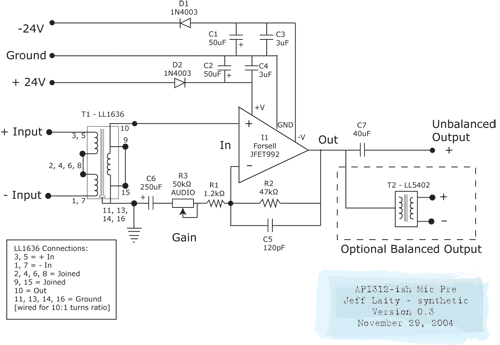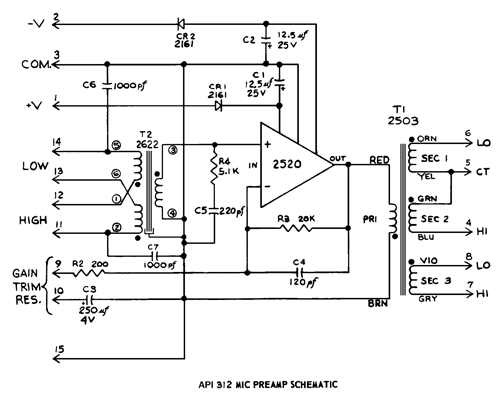synthetic
Well-known member
I just showed my design to an engineer at work. I explained that I have too much gain at the minimum setting. Now I have two choices:
- Use a 47k ohm trim pot for gain
- Use a 25k pot for gain, replace R2 with a 25k resistor
- Replace R1 with a stepped attenuator with values for 1k, 10k, 20k, 30k, 40k, 50k
Does the stepped attenuator gain me anything? (No pun intended.) There's the cool factor of course, but other than that is there an audio reason to use a combination of trim pot and stepped attenuator? I like having a trim pot in there so that I can reduce the level when the vocalist is about to scream out a high note, for example. But does the pot in the chain cancel out any audio advantages of using a stepped attenuator?
- Use a 47k ohm trim pot for gain
- Use a 25k pot for gain, replace R2 with a 25k resistor
- Replace R1 with a stepped attenuator with values for 1k, 10k, 20k, 30k, 40k, 50k
Does the stepped attenuator gain me anything? (No pun intended.) There's the cool factor of course, but other than that is there an audio reason to use a combination of trim pot and stepped attenuator? I like having a trim pot in there so that I can reduce the level when the vocalist is about to scream out a high note, for example. But does the pot in the chain cancel out any audio advantages of using a stepped attenuator?



































